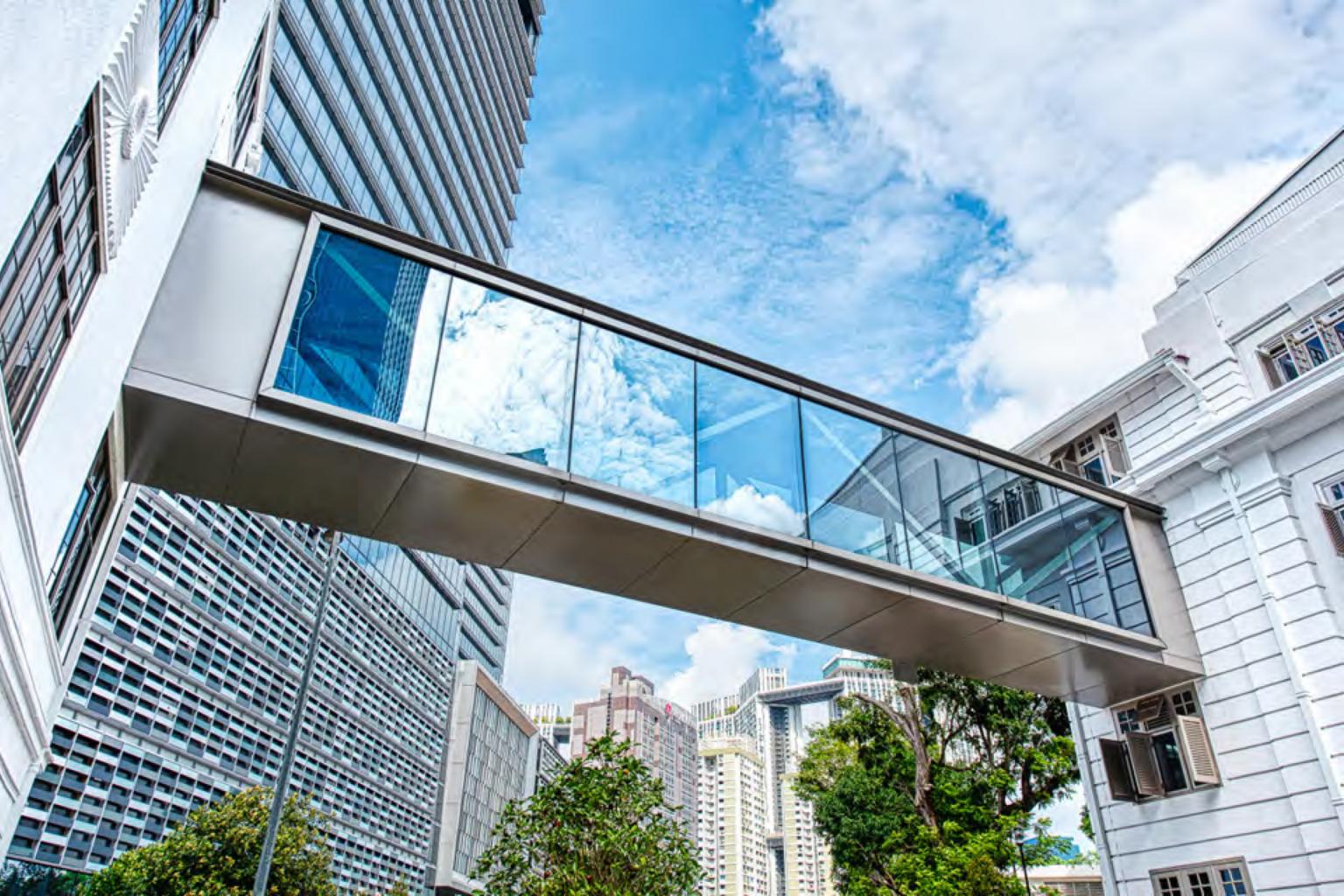Maxwell Chambers Suites one of four projects to win BCA engineering award
Sign up now: Get ST's newsletters delivered to your inbox

While the whole project took 1½ years to complete, the installation of the overhead link bridge was done in one night to minimise traffic disruption.
PHOTO: BCA
Follow topic:
SINGAPORE - An overhead link bridge that connects two buildings sitting on opposite sides of a road may sound simple to build but ask any engineer and he will tell you it takes a lot of precise engineering calculations to make it happen.
Throw in conserved buildings, whose facade must not be meddled with, into the mix and the already complicated job becomes exceedingly challenging.
Such is the situation that Mr Aaron Foong, managing director of KTP Consultants, a member of Surbana Jurong Group, found himself in at the start of 2018.
His team was tasked with the designing and construction of a 20m-long overhead bridge to connect Maxwell Chambers Suites, previously known as the Red Dot Traffic Building, to the Maxwell Chambers across the street.
Mr Foong's solution? A novel Z-profile steel brace that has not been used in any other building in Singapore.
When bonded with the integrated frame on the facade of the building, the Z-profile steel brace could support both existing loads and that of the overhead link bridge without making any modifications to the exterior facades.
Mr Foong also used micro-piles to strengthen the existing footing foundation of Maxwell Chambers from inside the building, minimising disruption at the street level.
For his innovative solution, the 40-year-old will be one of four professional engineers to be awarded the Building and Construction Authority's (BCA) Design and Engineering Safety Award this year.
The four award winners were announced by the BCA on Sunday (Aug 23). The award recognises professional engineers and their teams for their innovative designs and engineering solutions to challenging projects.
"It is a sustainable way to achieve an elegant outcome while protecting the facade of the buildings," said Mr Foong.
His team had brainstormed countless times and decided to eschew the more "common" way of using steel beams to prop up the bridge.
"We could easily have added an additional column but it would not have matched the final intent of preserving the heritage of the two buildings, which was an important factor for us," he said.
Both buildings were granted conservation status by the Urban Redevelopment Authority in 2007.
While the whole project took 1½ years to complete, the installation of the overhead link bridge was done in one night to minimise traffic disruption.
Another winning project that had to be completed fast and with minimal disruptions was the Singapore Management University (SMU) Connexion, a net-zero energy teaching building in the city.
Mr Kam Mun Wai, 53, senior executive director of Meinhardt Singapore, took on the challenge and completed the project - from piling to construction and interior design works - in 15 months.
The professional engineer was conferred the award for his use of an innovative hybrid Steel-Cross Laminated Timber (CLT) system, which uses prefabricated modular column-beam steel frames for the main building structures.
Mr Kam said the system offered a "quick and efficient" installation process. It could also mitigate the challenges of onsite space constraints and its close proximity to other buildings.
A similar hybrid steel-CLT solution was used in building a two-storey link building which connects SMU Connexion to the School of Law over the busy Fort Canning Link carriageway.
The entire structure, which was prefabricated, was completed in a record time of seven days. It would have taken around 1½ months if done in the conventional method.
Two other award winners, Mr Jason Tan Bok Leng and Mr Tan Yoong Heng, both from Arup Singapore, will also be recognised for their engineering achievements in the Outram Community Hospital and Thomson-East Coast Line Woodlands station projects respectively.

